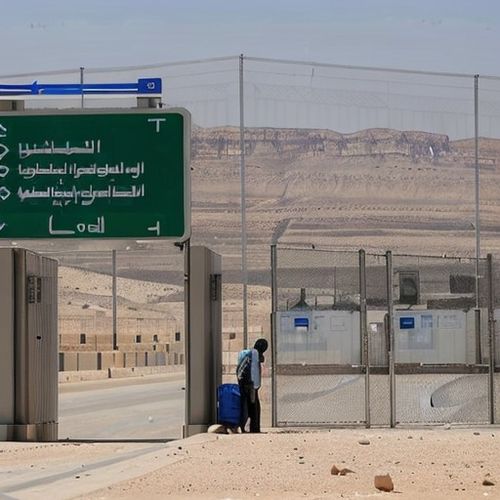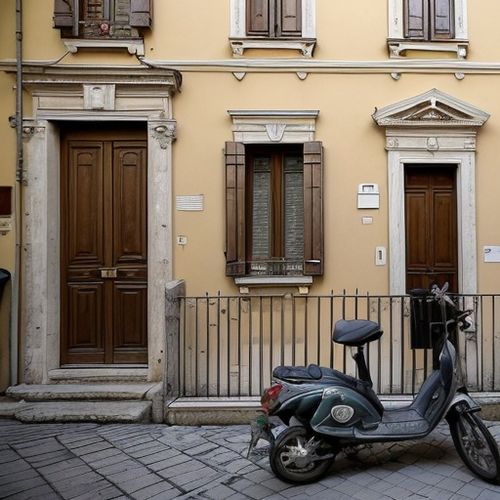Hundreds of travelers have been left stranded at the Israel-Jordan border crossings in recent weeks due to repeated technical failures in the newly implemented electronic clearance system. The automated gates, designed to streamline immigration procedures, have instead caused hours-long delays, leaving tourists frustrated and border authorities scrambling for solutions.
The high-tech system, jointly developed by both countries at considerable expense, was meant to reduce processing times and human error while enhancing security. However, since its rollout earlier this year, the technology has proven unreliable during peak travel periods. Last Tuesday marked the third major breakdown in as many weeks, with some visitors reporting waits exceeding six hours under the scorching desert sun.
"We arrived at 10 AM and didn't cross until after sunset," recounted American tourist Margaret Chen, who was traveling with elderly parents. "There was no shade, limited water, and absolutely no information about when the systems might come back online. The staff seemed as confused as we were." Her experience echoes dozens of similar complaints posted on travel forums and social media in recent months.
Border officials from both nations acknowledge the problems but offer conflicting explanations. Jordanian authorities blame insufficient Israeli bandwidth to handle the data load, while Israeli technicians point to synchronization errors in the shared database. Behind closed doors, sources suggest neither country adequately stress-tested the system before implementation.
The Allenby/King Hussein Bridge crossing has been particularly affected, with its older infrastructure struggling to accommodate the new technology. This vital link between Jerusalem and Amman serves as the primary transit point for diplomatic personnel, business travelers, and tour groups. During outages, manual processing resumes but at a fraction of the automated system's promised capacity.
Economic consequences are beginning to emerge. Several tour operators have started rerouting groups through Egypt's Taba border to avoid the unreliable crossings, adding significant travel time and cost. Hoteliers in Petra report an unusual dip in same-day cancellations directly correlated with system failures. Even diplomatic exchanges have been disrupted, with at least one ministerial meeting postponed when staff became stuck in queue.
Technicians from the German firm that developed the software platform have been flown in twice for emergency repairs. Their preliminary reports cite incompatible updates between the two nations' security databases as a root cause. However, implementing permanent fixes requires coordination between jurisdictions that maintain different data privacy laws and security protocols.
Seasoned border agents whisper that political tensions may be exacerbating the technical issues. The countries maintain a fragile peace, and some speculate that neither side wants to appear vulnerable by conceding their systems need major adjustments. This bureaucratic stalemate leaves travelers paying the price as summer tourism peaks.
Social media outrage has forced both tourism ministries to address the situation publicly. Jordan's minister promised temporary cooling tents and mobile water stations, while Israel announced a contingency plan to deploy additional staff during outages. Neither measure addresses the core technical deficiencies plaguing the $40 million system.
Business travelers like Dubai-based consultant Rajiv Mehra find the situation particularly galling. "This is supposed to be one of the most technologically advanced regions in the world," he fumed after missing a critical meeting in Amman. "Yet we can't keep basic border systems running? It makes both countries look incompetent."
Archaeologist Dr. Elena Petrov nearly missed her excavation team's departure to Wadi Rum due to the delays. "I've crossed here for fifteen years," she noted. "The old system with stamps and questions worked fine. This was supposed to be progress?" Her sentiment reflects growing nostalgia for pre-digital procedures among frequent crossers.
Behind the scenes, pressure mounts for a comprehensive solution. Insurance claims from missed flights and hotels are piling up, while border towns lose revenue from stranded travelers who would typically stop for meals and supplies. Rumors suggest the World Bank, which partially funded the system, may intervene if reliability doesn't improve by autumn.
As midday temperatures soar above 40°C (104°F), the human toll becomes concerning. Elderly visitors and families with young children have required medical attention after prolonged exposure. Last Thursday, Red Crescent paramedics treated seven cases of heat exhaustion at the northern Sheikh Hussein crossing during a four-hour outage.
The crisis highlights the risks of over-reliance on unproven automation for critical infrastructure. What was marketed as a seamless, futuristic crossing has become a cautionary tale about inadequate contingency planning. With the high tourism season continuing through October, authorities face mounting pressure to either fix the system or revert to traditional methods.
For now, travelers would be wise to pack extra water, patience, and perhaps a paperback when attempting to cross between these neighboring nations. As the sun beats down on the growing queues, one can't help but wonder if the much-vaunted paperless future has arrived prematurely at this ancient crossroads of civilizations.

By Emily Johnson/Apr 11, 2025

By William Miller/Apr 11, 2025

By Benjamin Evans/Apr 11, 2025

By Grace Cox/Apr 11, 2025

By Amanda Phillips/Apr 11, 2025

By James Moore/Apr 11, 2025

By Natalie Campbell/Apr 11, 2025

By Eric Ward/Apr 11, 2025

By James Moore/Apr 11, 2025

By Emily Johnson/Apr 11, 2025

By Christopher Harris/Apr 11, 2025

By Michael Brown/Apr 11, 2025

By Rebecca Stewart/Apr 11, 2025

By John Smith/Apr 11, 2025

By Natalie Campbell/Apr 11, 2025

By Emily Johnson/Apr 11, 2025

By John Smith/Apr 11, 2025

By Michael Brown/Apr 11, 2025

By Amanda Phillips/Apr 11, 2025

By Joshua Howard/Apr 11, 2025